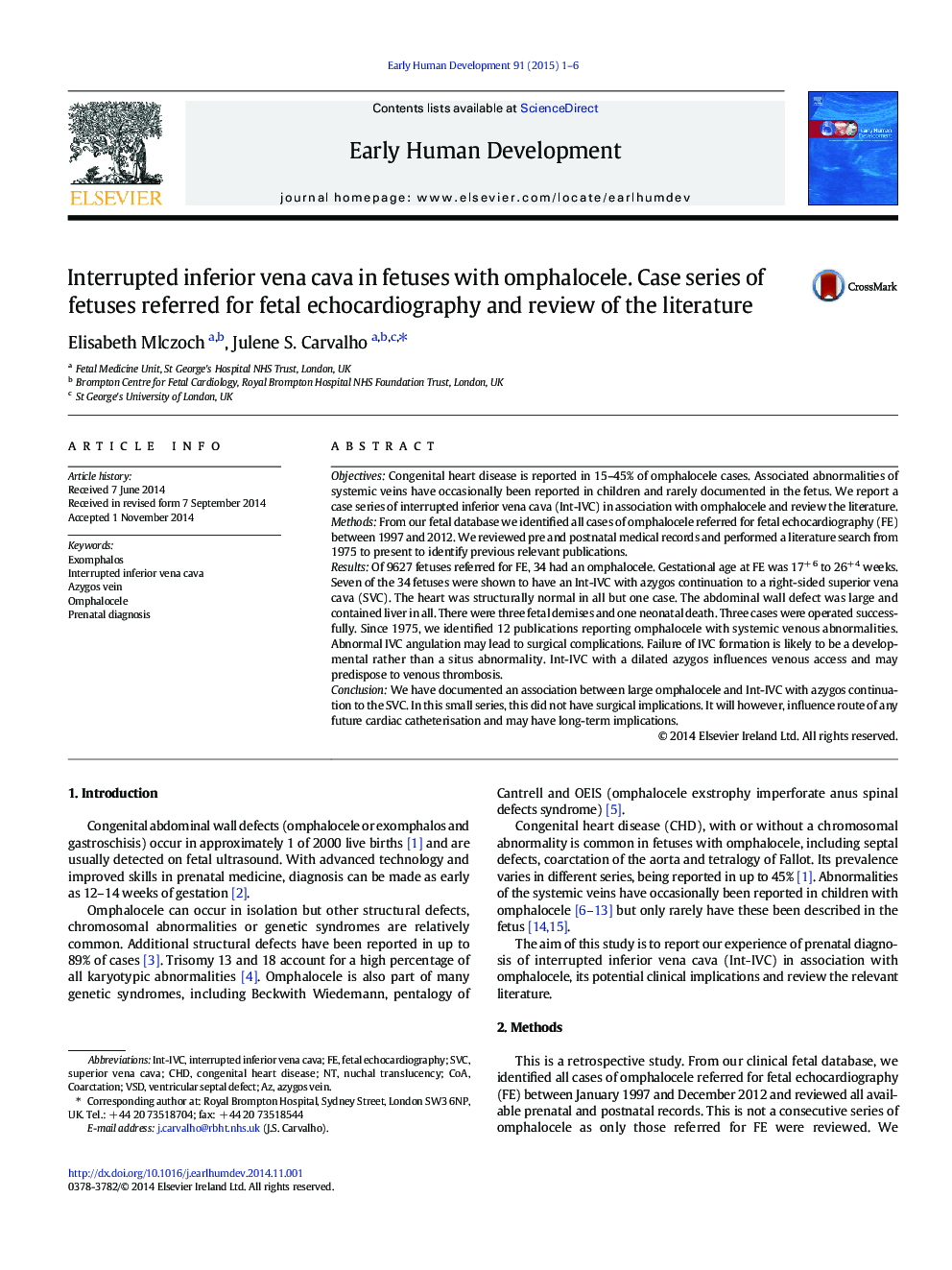| Article ID | Journal | Published Year | Pages | File Type |
|---|---|---|---|---|
| 3917948 | Early Human Development | 2015 | 6 Pages |
•We have documented the common association between omphalocele and Int-IVC with azygos continuation to the SVC.•This abnormality can also be a feature for a situs abnormality. Fetal echocardiography should distinguish between them.•Int-IVC in omphalocele may have clinical implications such as route of future cardiac catheterisation.
ObjectivesCongenital heart disease is reported in 15–45% of omphalocele cases. Associated abnormalities of systemic veins have occasionally been reported in children and rarely documented in the fetus. We report a case series of interrupted inferior vena cava (Int-IVC) in association with omphalocele and review the literature.MethodsFrom our fetal database we identified all cases of omphalocele referred for fetal echocardiography (FE) between 1997 and 2012. We reviewed pre and postnatal medical records and performed a literature search from 1975 to present to identify previous relevant publications.ResultsOf 9627 fetuses referred for FE, 34 had an omphalocele. Gestational age at FE was 17+ 6 to 26+ 4 weeks. Seven of the 34 fetuses were shown to have an Int-IVC with azygos continuation to a right-sided superior vena cava (SVC). The heart was structurally normal in all but one case. The abdominal wall defect was large and contained liver in all. There were three fetal demises and one neonatal death. Three cases were operated successfully. Since 1975, we identified 12 publications reporting omphalocele with systemic venous abnormalities. Abnormal IVC angulation may lead to surgical complications. Failure of IVC formation is likely to be a developmental rather than a situs abnormality. Int-IVC with a dilated azygos influences venous access and may predispose to venous thrombosis.ConclusionWe have documented an association between large omphalocele and Int-IVC with azygos continuation to the SVC. In this small series, this did not have surgical implications. It will however, influence route of any future cardiac catheterisation and may have long-term implications.
